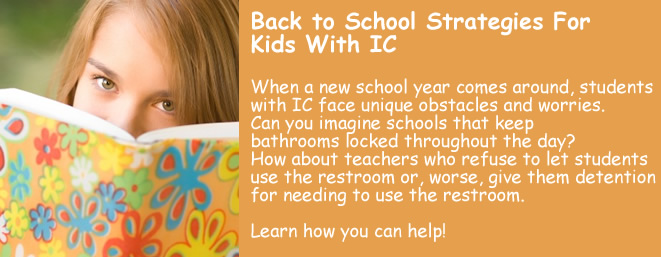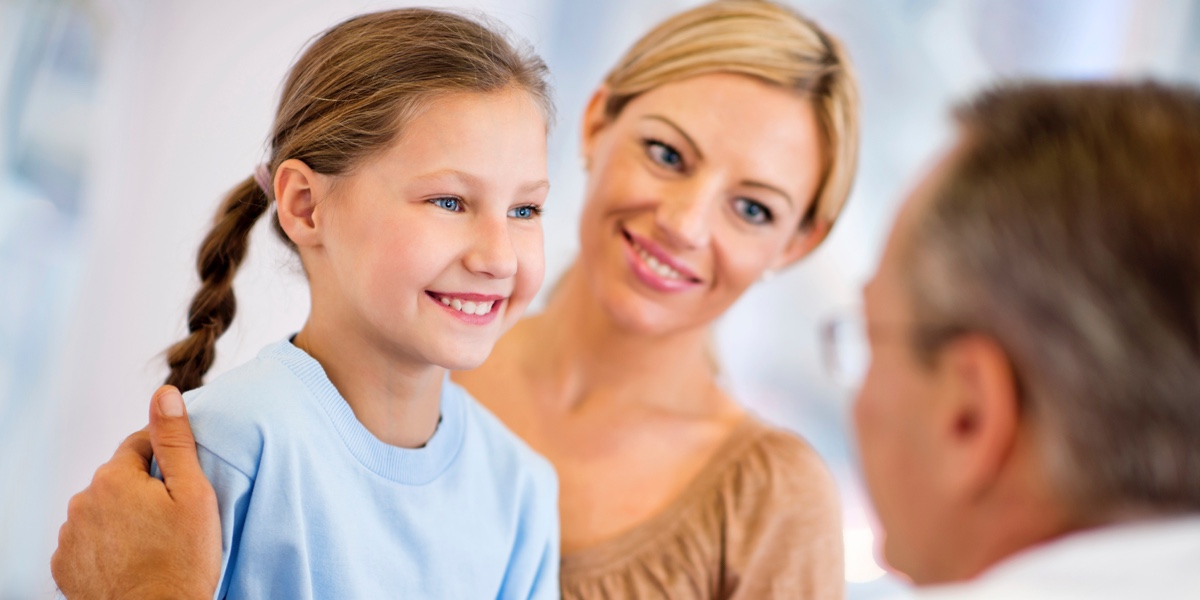Children & Teens Struggle With IC/BPS
Can children develop IC/BPS and pelvic pain? Absolutely. Children as young as two years old can struggle with bladder symptoms of frequency, urgency, pressure and/or pain as the bladder fills with urine. The challenge lays in determining the underlying cause of these symptoms. Our 2022 national guidelines for IC/BPS from the American Urology Association state that they no longer consider IC/BPS a “bladder disease” because no disease process is generally found in the bladder wall. Rather they now consider this a “neuromuscular disorder.”
Potential Causes
Trauma
In our office, we’ve worked with thousands of patients whose symptoms began at a young age, myself included. There is a common theme: trauma. Many patients report that they experienced tailbone injuries or were hit by cars at a young age that has left their pelvic floor muscles injured and tight. Pelvic floor muscles can also be trained to become too tight through ballet or dance. Some childhood sports cause repetitive injury to the pelvic floor, particularly bike riding which puts direct pressure on the pelvic muscles and nerves or sports which can cause falls (i.e ice skating, gymnastics, cheerleading, horseback riding and football). How do we know that muscles are tight? Difficulty starting urination. It may take 5, 10, 15 seconds or longer to relax enough to release urine.
Because the pelvic floor muscles are interwoven around various blood vessels and nerves as well as the urethra, vagina (in women) and rectum, tight muscles can interfere with normal functioning. It may become more difficult to relax enough to urinate or defecate. Blood flow to the bladder and other structures becomes diminished, resulting in “ischemia” and diminished health of the bladder wall. This is why tight muscles can be the underly cause of diet sensitivity. Nerves can also be compressed, resulting in a sharp electrical pain, sciatica symptoms, pins and needles and areas of numbness.
The Tragic Role of Abuse
There is another, more tragic, cause of pelvic pain in children: sexual or emotional abuse. Abuse (sexual and emotional) and bullying have now been directly implicated in the development of chronic overlapping pain conditions (IC, IBS, vulvoydnia, TMJ, fibromyalgia, migraines, etc.) that could lead to decades of pain and discomfort for the children affected.(2) This was the case for this author, who was attacked repeatedly by a stranger in childhood. I did not leave my home without fear from elementary school through high school. And I developed the classic progression of COPC’s with urinary frequency in junior high, vulvodynia in high school, IBS in my 20’s, migraines, TMJ and then severe bladder and pelvic pain in my early 30’s.
We often see adult IC patients who grew up in the homes of violent alcoholics. For these children, school was their safe place but as soon as they returned home, they entered “fight or flight” becoming cautious, scared and looking to avoid the abuser. Stress intensifies as that parent begins to drink, leaving the child in absolute fear for what could happen. “Fight or Flight” is normally short term, perhaps lasting 30 minutes until the stressor is gone. But for the child who struggles with abuse and fear for years, their nervous system becomes habituated into “fight or flight.” That child may develop anxiety disorder and catastrophic thinking that persists as they age and even after the abuser is gone. Depression and anxiety are very common.
This is NOT mental illness, but rather an injury to the central nervous system “aka central nervous system maladaption” that has left the brain “stuck” in “fight or flight” 24 hours per day. Heart rate is elevated, blood pressured increased and muscle tension becomes chronic which, over the long -term, actually increases pain, nerve sensitivity and muscle dysfunction. Therapeutically, treatment is focused on restoring healthy nervous system functioning (aka Mind-Body Medicine).
Poor Diet
Children and teens who consume massive amounts of juice, soda, coffees and other acids can develop an irritated and/or injured bladder wall over time. The human body is not designed for high levels of acid in todays, modern junk food diet. Water is essential and helps to flush toxins and irritants from the bladder.
Endometriosis
Young women have gone through puberty may be struggling with endometriosis or fibroid tumors which can trigger urinary symptoms.(3) If girls are struggling with very painful periods and/or heavy bleeding, an ob-gyn should be consulted. Fibroid tumors can grow in the uterus and physically press against the bladder also causing symptoms.
Drug Use
Ketamine has grown in popularity as a recreational drug in recent years for its ability to induce a floating feeling. Unfortunately, ketamine acts like an industrial solvent when used in large amounts, over time, damaging the bladder to the point that it may need to be removed. This is known as “ketamine cystitis.” Learn more about this at ketaminecystitis.org.
Diagnosis of IC in Children
As we see in adults, a diagnosis of IC in children is usually made after a thorough medical history, physical examination, voiding diaries and the exclusion of other medical conditions.(4) Testing is similar to that done with adults. One barrier to diagnosis is that some clinicians don’t believe that children can feel bladder or pelvic pain. Of course, children don’t have the language skills to express what they are feeling. Some may say “my pee pee” hurts. Others may cry as they urinate. One significant indicator is nighttime frequency, particularly if your child can’t sleep through the night or is up to use the restroom several times a night.
Treatment of IC in Children
Treatment options are also similar to those used with adults although it may also depend upon the age of the child involved. The AUA IC/BPS Treatment Guidelines rates treatments based upon safety and ease of use. In general, most clinicians prefer to start with the least invasive strategies first, particularly muscle relaxation, stress & anxiety management and diet modification.
- Read Dr. Robert Evans (Wake Forest University) treatment protocol for children. He is the only provider in the USA who has taken a special interest in working with children and teens.
Diet Modification
Self-help strategies can be very helpful in reducing bladder symptoms and discomfort, particularly avoiding foods that are high in acid or caffeine. Children are often told to drink cranberry juice, along with other juices, to help their bladders. Sadly, these often cause worse pain and discomfort. Similarly, sodas and coffee drinks should also be avoid. Click here to read more about the IC diet.
The ICN Shop offers a wide variety of foods and low acid drinks that can help your child enjoy food and not feel left out.
Family & Parental Support
Children and teens with pelvic and urinary pain often struggle with anxiety. They may wonder if they are dying or if they are being punished. As a parent, it’s vital that you address these fears quickly. IC is treatable! Your child has done nothing wrong. IC is not their fault. IC is a legitimate illness that requires compassion, caring and love. Asking a child with IC to “hold it” for another ten, fifteen or 30 minutes can be agonizing, both in a classroom or in a car. They need access to a restroom immediately and you should accommodate them whenever and wherever possible. As their parents, it’s your job to nurture them, hug them, push them when needed and give them a soft place to fall when they are in pain.
Parents can find support and valuable insight by talking with other parents of children with IC. You can find support opportunities in both the ICN Forum .
References:
- Raise-Bahrami S, et al. Symptom profile variability of IC/BPS by age. BJU Int. 2012 May;109(9):1356-9
- Tietjen GE, at al. Childhood maltreatment and migraine (part III). Association with comorbid pain conditions. Headache. 2010 Jan;50(1):42-51
- Walid MS, et al. Interstitial cystitis and endometriosis in a 12 year old girl. Arch Gynecol Obstet. 2011 Mar;283 Suppl 1:115-7.
- Yoost JL, et al. Diagnosis and treatment of interstitial cystitis in adolescents. J Pediatr Adolesc Gynecol. 2012 Jun;25(3):162-71
Back To School Strategies

With a new school year approaching, children and teens with IC might be anxious and uncertain. Will they be given restroom access? Will they have teachers who support them? Will they make new friends and fit in? Will the bus ride be comfortable? Your goal as a parent is to nurture and inspire them. School should be a source of happiness, dignity and pride. IC, however, can create obstacles, particularly with restroom access.
We’ve put our heads together to come up with some tips that you can use to advocate for your child with school administrators, personnel and teachers.
- Back To School Strategies For Students With IC
- IC Fact Sheets For Teachers, Nurses & School Staff
- ICN Restroom Access Cards – ideal for children to carry to show to school staff.
Living with IC as a child or teen can feel overwhelming but with the unconditional support of family friends, it can be much much easier. Dare your child to dream. There are space scientists living with IC, actors, actresses, judges, attorneys, teachers, nurses and doctors. IC doesn’t mean that they can’t have an amazing career or a wonderful family of their own.
Suggested Reading
- IC101: It’s Not Just A Bladder offers extensive discussions of phenotypes, new diagnostic methods, treatment and pain care.
- “Interstitial Cystitis in Adolescents and Children: A Review”
- Is interstitial cystitis an underdiagnosed problem in children? A diagnostic and therapeutic dilemma. Park JM. Urology. 2001 Jun;57(6 Suppl 1):30-31. No Abstract available.
- Interstitial cystitis in children: not a rare entity. Schuster GA. Urology. 2001 Jun;57(6 Suppl 1):107. No Abstract available.
- Chronic interstitial cystitis and systemic lupus erythematosus in an 8-year-old girl. La Manna A, Polito C, Papale MR, Rocco CE, Marte A. Pediatr Nephrol 1998 Feb;12(2):139-140
- Bowel perforation and interstitial cystitis in childhood systemic lupus erythematosus. Eberhard A, Shore A, Silverman E, Laxer R. J Rheumatol 1991 May;18(5):746-747

